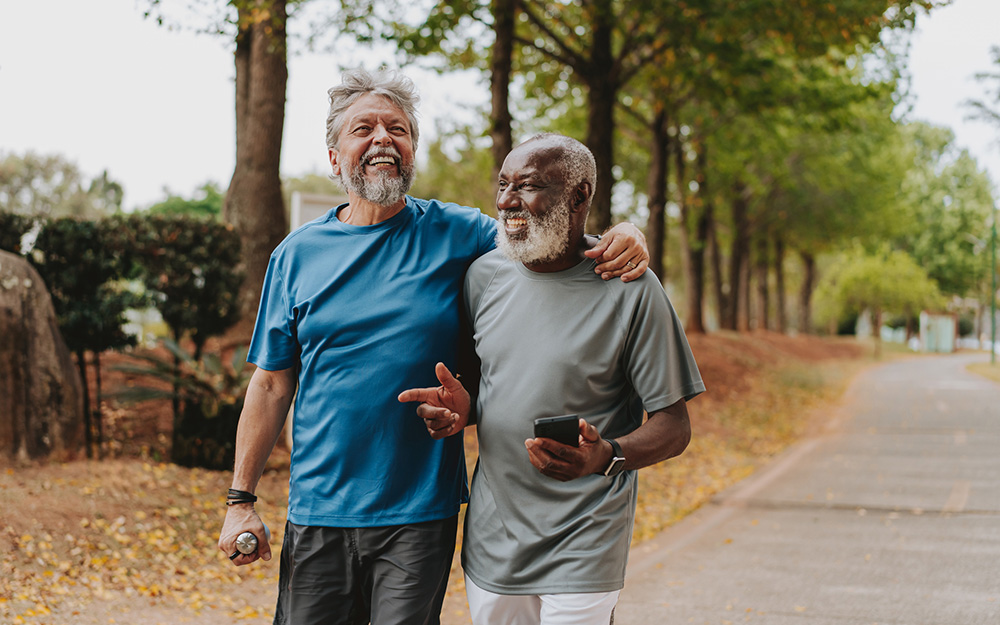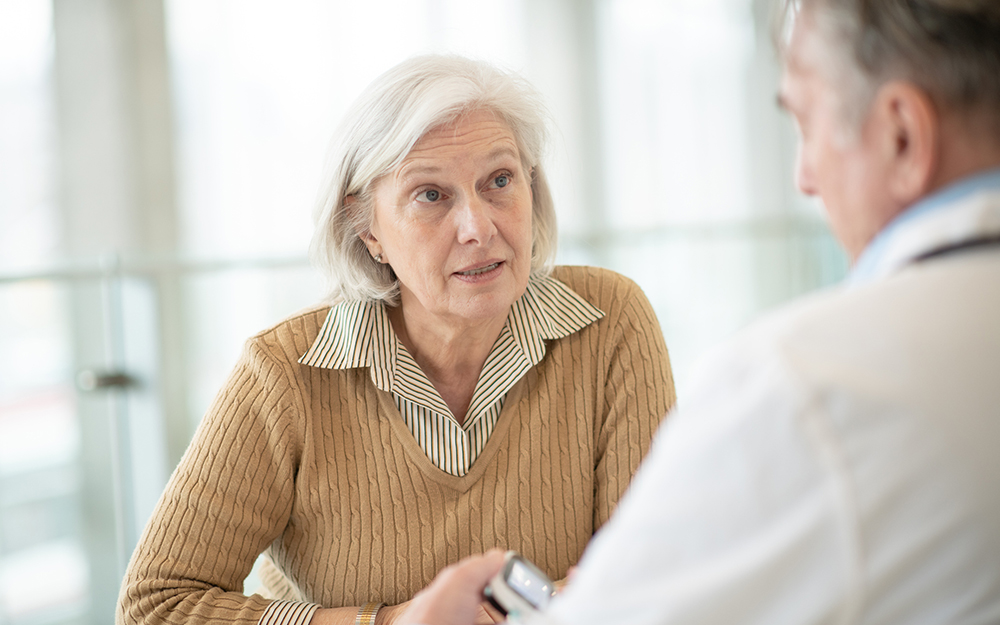How to Exercise as You Age
Date
August 3, 2023

Date
August 3, 2023
Credits
Medical providers featured in this article
In Brief
{{cta-block}}
Maybe you swim lengths or stretch in the mornings to clear your head, golf with co-workers, play soccer or lift weights at the gym. Or you might enjoy leisurely walks and hikes in nature.
There are as many ways to move your body as there are people. And it’s likely your physical activity evolves throughout your life.
Similarly, every body responds differently to exercise, varying between each person and as we age. Nicolas Musi, MD, director of Cedars-Sinai’s Division of Endocrinology, Diabetes and Metabolism as well as the Aging Center, is aiming to uncover the physiological processes behind these diverse reactions.
{{providers}}
Exercise is a powerful driver of health at every age, strengthening the bones, heart and even the brain. Getting sufficient amounts can slow cognitive decline, disability and reduce the risk of a vast array of conditions from osteoporosis, cardiovascular disease and heart failure to dementia, obesity, metabolic disorders such as diabetes and as many as 13 different cancers, according to the American Cancer Society. Physical activity can also improve quality of life, survival and treatment benefit for patients with those cancers (including breast, colorectal, endometrial and prostate), heart disease or stroke, health officials reported. And it’s valuable for mental health, preventing and easing depression and anxiety.
“Even tiny amounts of exercise are beneficial,” Musi said.
Unlocking the science of exercise
It’s not well understood how exercise is so effective and why it varies so much across different bodies. What makes the Olympic athlete excel, and why do some people need more days of rest between workouts? And which activities—cycling, basketball or running, for example—are better for which people?
“It’s remained an enigma in science,” Musi said. “We hope to create a robust set of data that can guide these questions moving forward.”
The Molecular Transducers of Physical Activity Consortium (MoTrPAC), funded by the National Institutes of Health, is investigating these biological exercise responses at several clinical sites across the U.S.
Musi’s new Cedars-Sinai physiology lab is aiming to enroll around 300 participants for MoTrPAC, including both adults with a sedentary lifestyle and those who are already highly active or trained.
Researchers conduct extensive testing of body composition and exercise capacity, measured with cardio-pulmonary testing that determines how well each body consumes oxygen and uses the needed energy to exercise. They also evaluate hand, arm and leg strength, to gauge muscular ability.
“Even tiny amounts of exercise are beneficial.”
Over the course of three closely monitored months, participants engage in both endurance, or aerobic, exercise (vigorous, heart-pumping work-outs such as cycling and jogging) and resistance forms that involve push-back (weightlifting, including bicep curls and bench presses). They start slow, building carefully to more intense exercise.
Musi’s team collects blood, muscle and fat tissue throughout the trial—at rest and after physical activity—and analyzes them to construct molecular maps of participants’ genes, proteins, enzymes and metabolites.
The idea, Musi explained, is to “link your molecular profile with your actual physical and exercise profile.”
The larger move is toward “precision exercise”—personalized workouts adapted to your health, genetics and body’s biology that also help reduce potential risks, such as joint and muscle damage.
Additionally, scientists hope identifying involved pathways can guide drugmakers to develop treatments that safely re-create the health effects of exercise for those who aren’t able to.
Early findings
Researchers have already found specific enzymes, proteins and genes that are critical to effective exercise, as well as substances expelled throughout the process.
“At first, they thought it was just muscles contracting or the heart pumping harder, but it has become apparent that many of our organs and tissues respond to exercise,” Musi said.
In fact, physical activity likely activates hundreds of genes and proteins—not just one or two—and releases hundreds of substances that communicate from the muscle to the brain, then to other tissues throughout the body.
The data also suggests that while both resistance and endurance exercise can improve muscle function and strength, molecular signals differ between the two.
Musi added that a combination of both types of physical activity likely works best.
The right exercise as you age
Moving your body is vital throughout your life.
For adults 65 and older, the Department of Health and Human Services suggests at least 150 minutes to five hours of moderate-intensity or 75 to 150 minutes of high-intensity aerobic exercise per week, incorporating regular muscle-strengthening and balance-training activities—crucial for preventing falls and broken bones.
If you haven’t been active in a long time or have a physically limiting condition such as arthritis, consult your doctor or geriatrician before you begin, Musi suggested. You may also need a cardiac evaluation.
Start with once or twice-weekly workouts under supervision, if possible, and be cautious, easing your way into exercise to ensure you can tolerate it: “There’s no rush.”
Additionally, strength testing and proper nutrition, with plenty of protein, can help slow muscle loss.
Losing weight without medical guidance can be dangerous for older adults, Musi added. Working with a nutritionist on your journey is worthwhile.
And incorporating different exercise types into your routine—swimming, cycling, walking, jogging and weightlifting—becomes even more valuable as you age.
Find activities you enjoy, Musi encouraged, and try to work out with others, which can help you have fun, stick to your program and enjoy mental and social benefits.





